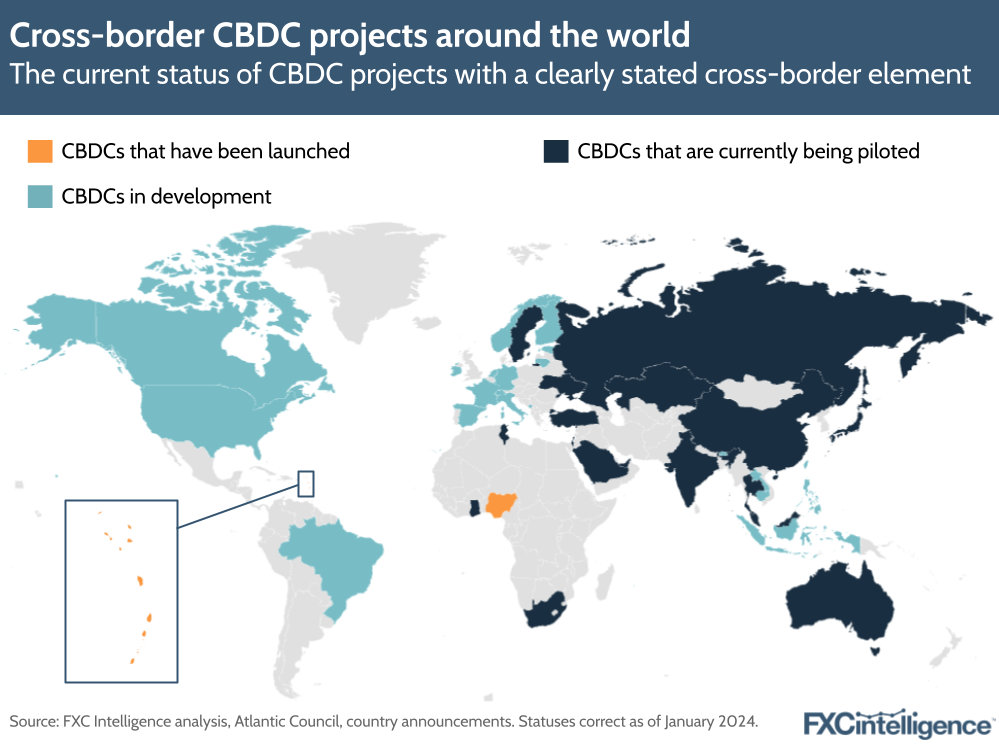Last week, attention returned to central bank digital currencies (CBDCs) for two very different reasons. First, Donald Trump said that he would prevent the creation of a CBDC in the US, describing the technology as a “threat to freedom”. Meanwhile, Swift announced that three central banks had begun testing its solution for interoperable CBDCs, increasing focus on CBDCs that work as part of wider financial networks rather than as standalone systems.

While many countries, including both the UK and US, have yet to commit either for or against a CBDC, there has been considerable work in researching and trialling the technology around the world. According to Atlantic Council data, 130 countries representing 98% of the world’s GDP have ongoing CBDC projects, either at the research and development, pilot or launch stage.
In a growing number of cases, this also includes a cross-border element. Across 64 CBDC projects currently being developed, piloted or launched, we found that 54 (84%) had improvements to cross-border payments as a clearly stated goal or focus. While 11 of these have launched, 21 are currently being piloted, with the rest at some stage of research.
Cross-border CBDCs have seen particular focus in the Asia-Pacific region, where the vast majority of pilot projects are. This reflects what we saw at the Singapore Fintech Festival, where the technology is a much stronger part of the cross-border payments conversation than we generally see in the West.
By contrast, most of those already launched are based in smaller economies in the eastern Caribbean. Meanwhile, while many have not yet mentioned an explicit cross-border focus, we have seen an uptick in CBDC research in Africa since we last looked at projects almost a year ago.
The question of CBDCs’ role in the future cross-border payments landscape currently remains unanswered, but it’s clear the interest in the technology’s utility remains high.
How does FXC Intelligence data underpin central bank decisions?


